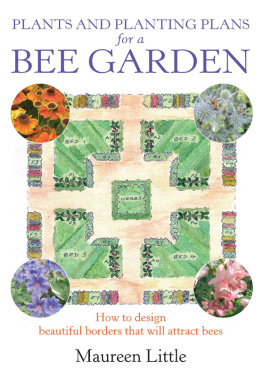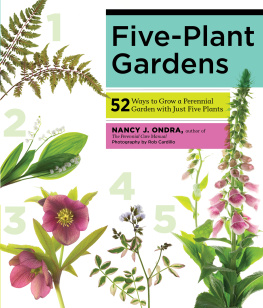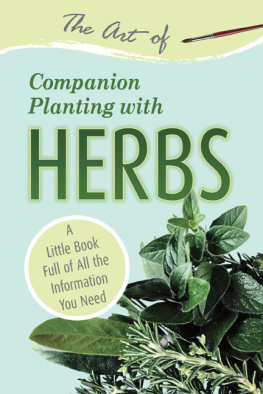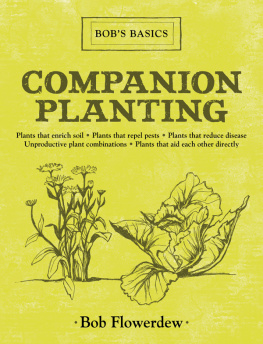Piet Oudolf and Noel Kingsbury
PLANTING
A NEW PERSPECTIVE

CONTENTS
INTRODUCTION
Planting design for the twenty-first century
ONE
Planting the big picture
TWO
Grouping plants
THREE
Combining plants
FOUR
Long-term plant performance
FIVE
Mingling currents in contemporary planting design
CONCLUSION
The new planting


Angelica gigas seedheads stand like spectres amongst a range of late flowering perennials in Piet and Anja Oudolfs garden.

A green roof around a conference facility: Moorgate Crofts, Rotherham, Yorkshire, designed by Nigel Dunnett (2005). A variable 1020 centimeter deep substrate supports a wide variety of plant life (around 50 species), selected to maximize the length of the flowering season. This is an example of a semi-intensive green roof, where visual appeal is important as well as functionality.
INTRODUCTION
PLANTING DESIGN FOR THE TWENTY-FIRST CENTURY
Plants are increasingly being recognized as a vital part of our urban and domestic environments, not just a luxury or an unnecessary if pleasant bit of decoration. It has long been established, for example, that the mere view of plants through a window has a beneficial effect on the human psyche, and that plants can play an important role in cleaning and purifying the air of buildings and built-up environments.

Gardening, whether on the most intimate private level or the most extensive and public, involves an appreciation of and involvement with the natural world. For many people, plants may be their only point of contact with nature apart from feeling the effects of the weather. Private gardens offer the opportunity for personal choices to be made about what plants to grow and how to manage them, while designers of civic landscapes have always had the responsibility of serving the wider public interest. There is, however, a new and additional agenda for gardeners, both private and public: sustainability and the support of biodiversity. Sustainability demands that we minimize irreplaceable inputs in gardening and reduce harmful outputs, while the support of biodiversity brings a demand for wildlife-friendly planting and practices.
The use of long-lived perennials in conjunction with woody plants the approach Piet Oudolf and I, Noel Kingsbury, have always supported genuinely offers improved sustainability and support for biodiversity. Reducing the amount of regularly mown lawn and the unnecessary trimming of woody plants for unclear motives is surely a step forward. Creating rich garden habitats offers natural beauty close at hand, provides resources and homes for wildlife, and improves the sustainability of management.
Deciding what plants to use and how to arrange them is covered by the field of planting design, which brings together a combination of technical knowledge and artistic vision. This book looks at some of the recent trends within planting design, and is aimed primarily at home gardeners, garden design and maintenance professionals, and landscape architects. It has important lessons for others, such as architects, who do not use plants directly but often have to situate their work in close proximity to them, or ecologists, whose profession does not involve much design but who increasingly have a role to play in the creation and management of designed plantings.
While the role of plants and therefore planting design is well established in the domestic garden, and is indeed absolutely crucial to its aesthetic and functional success, it has not been so well established in landscape design. Or perhaps more accurately, plants have often played a minor role in urban landscape design. Historically, for centuries the only plants used in cities were avenue trees; the nineteenth century saw the growth of urban parks, the late twentieth a much wider use of plants in urban areas a practice to a large extent pioneered in the Netherlands. Now, however, the use of plants is increasing, particularly that of perennials and ornamental grasses, requiring greater access to technical information about plant establishment and management, and to ideas about the visual aspects of their use. It is perhaps worth looking at these new trends.

The former nursery at Piet and Anja Oudolfs at Hummelo in the Netherlands. It is now a boldly experimental area where robust perennials grow amidst a sown mix of wild pasture grasses along with various spontaneously arriving species. Only time will tell how it will work out. The pale mauve-blue is Aster Little Carlow, the dark red Eupatorium maculatum Riesenschirm.

A randomized perennial mix designed by Nigel Dunnett at Sandvik Tools, Warwickshire (2007), designed to capture and hold water during periods of high rainfall and so prevent flooding. The dark purple is Aster novi-belgii Purple Dome.
Green roofs
While green roofs have captured the public imagination, the technology involved in their construction is also being used in many other situations, often not immediately recognisable as roofs. Increasingly, high-density urban environments are creating artificial growing situations which require soil or artificial soil-like substrates above impermeable surfaces. An example of such a green roof which is not a green roof might be Chicagos Lurie Garden built over a parking garage.
Green roofs are often categorized by the use to which they are put: extensive roofs are functional and usually have a shallow substrate; intensive are more likely to be roof gardens with conventional planting; semi-intensive ones are somewhere between and are developed for their visual appeal as well as functionality. Extensive and semi-intensive roofs tend to be planted up with plant communities combinations of plants selected for the conditions which coexist well and survive with minimal maintenance, often species from dry meadow habitats. In this sense there is a real distinction between these and conventional plantings, where plants are placed individually.
Water management
A major environmental problem in cities concerns the management of water, especially the control of excessive run-off during storms, which can cause flooding and associated pollution. Sustainable urban drainage schemes (SUDS) are designed to capture water, and either store it or release it slowly into the water table or streams or allow it to be evaporated back into the atmosphere. Domestic gardeners in some cities are encouraged to develop rain gardens where the same objectives are reached, with no drainage water leaving the property and the minimum amount of irrigation water brought in. Green roofs, with their capacity to store rain as it lands, often play a role in integrated SUDS. SUDS often involve swales detention basins where water can be held temporarily before slow release into natural drainage systems. Often these are planted up with a carefully selected vegetation, usually locally native species which can survive periodic inundation but dry conditions too. More ornamental planting combinations are, however, also possible. Again, the emphasis is on mixtures of species.
Next page













